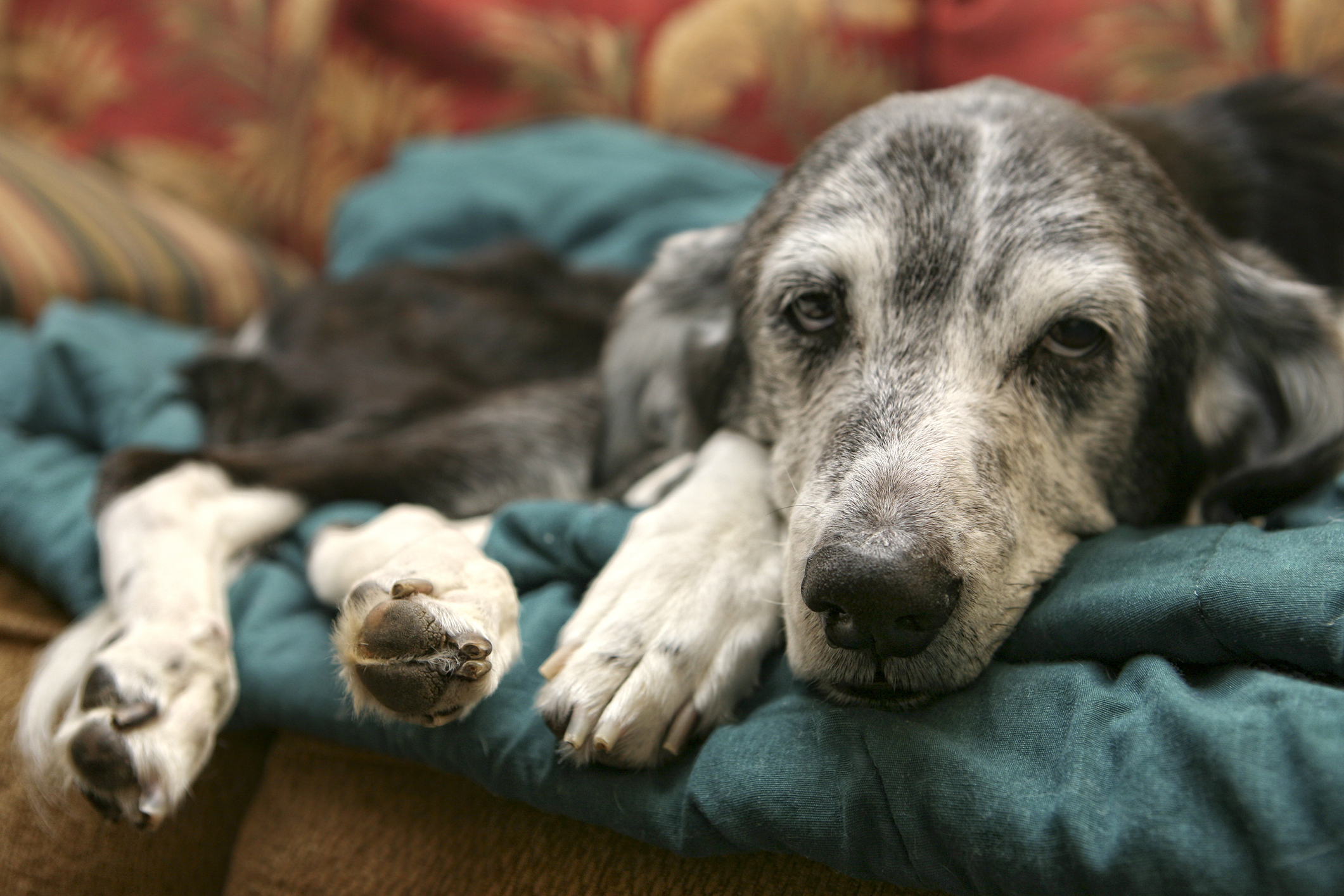
What is Osteosarcoma? How Can it Make Life Extra Hard for Your Pup?
Of all the potential types of cancer your dog could succumb to, osteosarcoma might be one of the most painful and aggressive. This fast-spreading cancer is known to disrupt the life your dog knows and loves in many ways.
Understanding this scary form of dog cancer can help you prepare to notice the signs and get your dog the help they need as soon as possible.
Understanding osteosarcoma
Osteosarcoma is the most common primary form of bone cancer in dogs, meaning it originates from the bone rather than spreading to the bone from another location. This form of cancer is extremely aggressive and easily spreads from the bones to other parts of the body.
In dogs with osteosarcoma, tumors form within bones. Any bone might be affected, but tumors in the bones of the frontmost limbs of the body are most common.
Research has not uncovered the cause of canine osteosarcoma, but it has shown that the cancer is more common in large and senior dogs—particularly in breeds like Scottish Deerhounds and Rottweilers.
Unlike other forms of cancer that might cause more generic symptoms of illness, such as weight loss, inappetence, lethargy and vomiting, osteosarcoma tends to produce slightly more specific symptoms. These may make it easier to detect a problem with your pet’s health. Unfortunately, early signs can be subtle, and by the time you notice, the cancer may have already begun to spread.
Symptoms often include those that might be mistaken for arthritis at first:
- Lameness in a particular limb, which may affect how your dog walks, runs, lays or plays
- Swelling or a noticeable mass on a limb
- Lethargy

Depending on where the tumor is located, your dog may experience additional symptoms. For example, tumors in the jaw may make it harder for your dog to open their mouth or to eat. Tumors in the spine or skull might lead to neurological issues, including seizures.
Upon noticing symptoms, you should take your pup into the vet. X-rays, other scans and biopsies are usually necessary to reach a diagnosis and get a comprehensive understanding of your pet’s tumor. Potential treatment for the cancer will only be possible once your vet knows where the tumor is located, how large it is, whether or not it has spread and if it is operable.
After receiving a diagnosis, there may be a few options for your pup’s cancer treatment. Unfortunately, given the severity of the disease, most treatments are aggressive or have high risks.
- Surgery: One treatment that may be an option is surgery to remove the bone affected by a tumor. The affected bone will typically need to be replaced with another bone. Unfortunately, surgery is not always viable due to the size or location of the tumor. Even if it is a viable option, the risk and rate of infection for this procedure are high.
- Amputation: Another treatment option that comes with lower risk but will permanently alter your dog’s life is amputation. This is quite common in canine osteosarcoma cases where a single leg is severely affected. Although amputation seems like a drastic move, it may be the most effective way to prevent your pup’s cancer from spreading and give them the highest quality of life.
- Radiation: In some cases, highly targeted radiation therapy followed by chemotherapy may be enough to eradicate small tumors and cancer cells. This is the least invasive form of treatment and aims to leave as much tissue undamaged as possible.
- Palliative care: If the cancer has damaged too much of the bone and/or spread to other parts of the body, radiation therapy combined with pain medications or alternative therapies may be used to slow the spread and give your dog a better quality of life without trying to reach remission.
Helping your pet cope with osteosarcoma

Because osteosarcoma is so invasive and targets the structural components of your dog’s body, it is quite a painful condition. Aside from preventing the spread of and killing cancer cells, a major challenge of treatment is minimizing your dog’s pain and helping them live comfortably in spite of their cancer.
Osteosarcoma that affects a limb or another major part of your dog’s structural system will likely make it more difficult for them to move around and play like they used to. Great care will need to be taken when helping a dog manage bone cancer, since injuries are more likely and pain levels can quickly rise.
Your dog will need lots of rest and TLC at home. They will still need to exercise, but the form that exercise takes will need to be gentler, such as calm walks or swimming instead of running and leaping. Pain medications or pain-relieving supplements may also be helpful to alleviate your pup’s daily discomfort.
If your dog requires amputation to mitigate the spread of their cancer, their activity levels may surprise you. Many dogs perform very well with only three legs. However, for their comfort and safety, you might need to make lifestyle or home alterations like ramps and mobility aids so your dog can navigate more easily.
Discuss these kinds of necessary changes with your vet to discover the many ways you can make life much more comfortable for your pet while they manage this painful disease. With your help, they can live out the rest of their days with comfort and joy.


